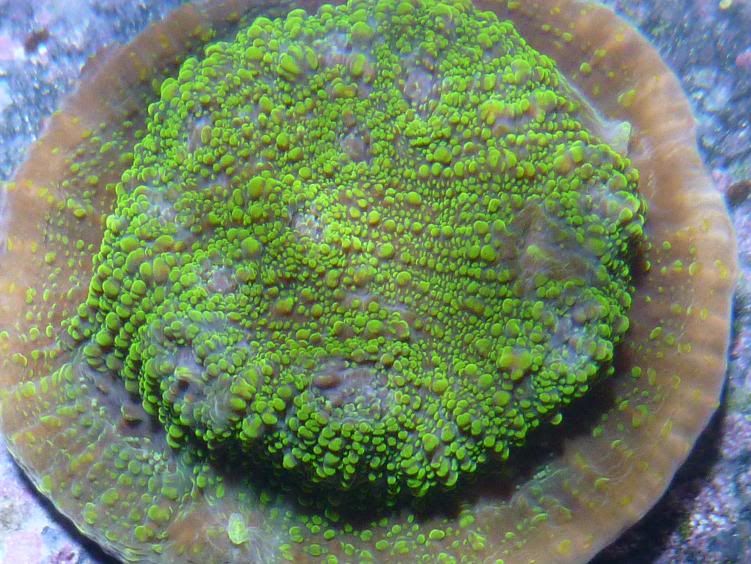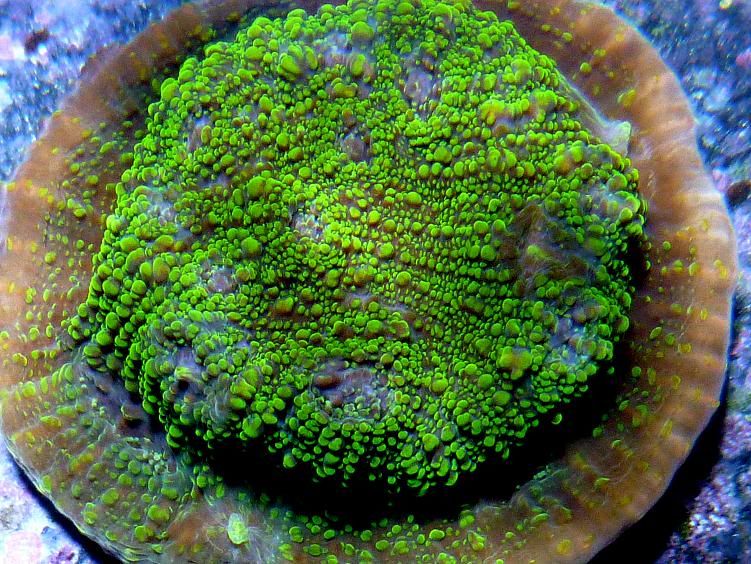-
Posts
6,328 -
Joined
-
Last visited
Content Type
Profiles
Forums
Gallery
Events
Store
Posts posted by lanman
-
-
Do I get new labels with little octo-dudes for all of my previous GSA stuff??

Welcome aboard! Arrrrrrr...
bob
-
Yes. Eventually they rust up from the salt water, unless you rinse and dry them after every use. If you don't have bone cutters - how do you cut frags from corals in the tank? If you are using a pair of wire snips or something - try those on the rock.
bob
-
My 240 w/total system volume of about 300 gallons evaporates about 4 gallons/day under T5 lights.
1 gallon from frag system 1, and 2 gallons from frag system 2. In the spring and fall, when neither A/C nor heating are operating very much - I have a lot of problems with humidity; condensation on the cold floor, etc.
bob
-
Are you seeking a way to remove encrusted coral from a rock? You'd be surprised how soft most of our live rock is. Just take your bone cutting pliers, and nibble around it until it's off of there.
bob
-
That's what small frags of my Gadgets acro look like - EXCEPT - they usually have more branching and less encrusting.
bob
-
If they're all the same sex, they're most likely all females if they get along.
They mostly ignore one another - what would happen if I found a male and added him?
bob
-
I have 4 VERY large pajama cardinals. Any way to sex them? I keep watching - and nobody ever seems to be carrying babies. Just my luck to have 4 - all the same sex...
bob
-
Here's the response I got from the manufacturer-
Dear Sir:
Cyclop-eeze is NOT FOR HUMAN CONSUMPTION.
Please DO NOT EAT IT.
The product is for aquatic animal use only.
ROTFLMAO!!!!

-
Actually - I would suggest an e-mail, seeing as he left his e-mail address.

bob
-
Very nice of you, Jeff. I'm sure someone will step up. How much live rock do you estimate you have in there?
Anyone considering should read up on the twin-spot wrasse. Large, aggressive, and will turn your tank upside-down. Pretty fish, though!
bob
-
Looks great and right up my alley!
How much?
I want my directions loose though.
http://www.thepelicanstore.com/Pelican-1200-Case-1010.aspx?gclid=CN_1wP2986ECFYrF3Aodfj9olA
bob
-
I have a 150W Aqua-medic PENDANT.... sorry.
bob
-
They had something like this on MonsterQuest a couple weeks ago. There are Pirahna in some river in Illinois that people dumped, they spawned and survive now because of the warm water from Power Plants.
I saw the movie!!

bob
-
Personally I would only do it if some environmental reason was preventing an accurate representation of the color. When I'm buying, I don't want to see what the coral will look like if I adjust a bunch of settings on my camera. I want to see what it will look like in my tank.
'Environmental reasons' in this case is a camera that just won't adjust properly to my 14K lights.

bob
-
Some people's pictures on here are incredibly vivid - the colors bright and saturated, and the images so crisp you can hear them snap!
I hear people talking about taking pictures in some mode or another, and then post-processing. I assume 'post-processing' is anything you do to a picture after it is taken, as opposed to making adjustments to white balance, aperture, shutter speed, or lighting during the process of taking it.
For the purposes of selling corals - one wants to have an accurate representation of a beautiful coral. In some cases, people or businesses tend to 'over-emphasize' the attributes of their corals.
So what is acceptable? Increasing/decreasing contrast? Sharpness? Color saturation? The colors themselves? Or is anything acceptable, as long as it gives a MORE, rather than LESS accurate representation of what you see with the human eye??
For example: This is an original photo of one of my chalices:

This is the same image. I used a photo editor that came with a scanner - only minimal adjustments available. For this picture, I reduced brightness (-1), increased contrast (+2), and increased 'sharpness' (+3) - the sharpness change did very little, if anything. I made no changes to the color at all.

I find the 2nd picture more accurately represents what the coral looks like under my 14K Phoenix bulbs.
Is that 'OKAY' if I use the 2nd photo when I post a frag of it for sale?? Or am I a bad boy and a fraud??
Opinions?? Methods used?? Techniques??
bob
-
Somewhere in your cameras' settings, there is a mode to take pictures of high contrast or vivid images. Don't select "Auto", but find the setting that most closely resembles what you are looking at through the display on the camera.
After you take the picture, use the correction software and start adjusting the colors till they are accurate. You can use the white eggcrate as the benchmark and make adjustments so long as the eggcrate remains white. Digital "noise" shows up as purple pixels when you've pushed the limits.
I almost started a thread on this a while back. I think I will start one now. 'What is acceptable post-processing of photos?' Look for it in the photography section!

bob
-
Bob, I've killed of Outlaw's Palys by injecting them one by one with undiluted muriatic acid (just a drop in each and only a few - up to 10 - at a time). Coincidentally, when you do this, bubbles rise up out of the paly.
Yet another good reason to stop at a drugstore for needles. Despite the funny looks I'm sure to get.
bob
-
I am using 12 volts DC and 500 miliamps. The needle is the negative electrode.
I don't know why it is not working as well. I am also using graphite. How much graphite do you have exposed?
I am 14vdc 360ma - I have 1/2" x 1" of graphite exposed.
bob
-
Looks great!! A couple of those corals look familiar - the purple birdsnest, and the purple-tipped acropora nana.

bob
-
The Calfo overflow on my 240 is about 1.5" below the top of the tank. There is a plastic piece on the front and sides of the tank about the same width, so that the top level of the water is behind the plastic strip (looks full).
I have nothing to keep fish from the overflow. When I first started up the tank, it seemed like I found a fish in the overflow or the sump every week, and had to put it back in the tank. They learn after a while - haven't seen one go over in 2 years.
bob
-
Okay... yours puts out at least twice the bubbles that mine does. Any hints, tips?? What might cause less bubbles?? I am using a piece of graphite from a carpenter's pencil as the other electrode.
Thanks,
bob
-
And good luck on growing them out. They can be pretty cantankerous. Recently I had one grow from 3 polyps to about 10 polyps - and then without being moved, or any other changes, it started losing polyps. Now it seems to be growing again from about 5 polyps. sigh...
bob
-
I saw a commercial tank this weekend - had a PAIR of fish in it - wrasse-like. Very black, with very white spots all over - and an 'eyespot' towards the tail. One was almost 6" - and the other about 3". I've searched a bit and found a 'black leopard wrasse' - but the picture I found is not AS black, and doesn't have an eye spot. Any hints? I want one!

bob
-
BIG tub?? I'd worry about temperature extremes. But it would make a good experiment.
bob




JUNE 12th FRAG SWAP at MR. CORAL in Frederick MD
in General Discussion
I wonder if the M-D reefers have different corals to trade than us WAMAS reefers??
How you fixed for Sunset Montipora up there??
bob